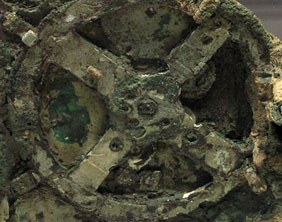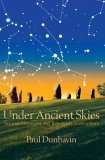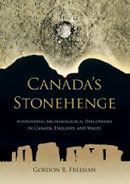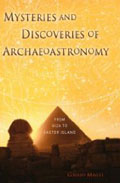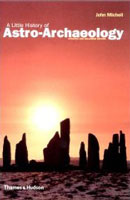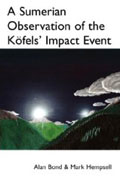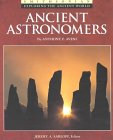
![]()

text translation service for many worldwide languages
|
|
some news sources require registration but this is usually free
all links are active at the time of posting
Morien Institute News Headlines Archive for
2013
January |
February |
March |
April |
May |
July |
August
September |
October |
November |
December
2013 |
2012 |
2011 |
2010
2009 |
2008 |
2007 |
2006 |
2005 |
2004 |
2003 |
2002 |
2001 |
2000
Marine Archæology News Archive |
Astro-Archæology News Archive
Marine Archæology 2013 News |
Astro-Archæology 2013 News
Top June 2013 New Discoveries …
“Prehistoric Cumberland Plateau art maps the oldest US cosmology – video”
“Stonehenge Revealed: Why Stones Were a ‘Special Place'”
“Lost city of Mahendraparvata discovered in Cambodian jungles”
“European Music Archaeology Project”
“Mysterious 60,000 Ton Monument Found Beneath The Sea Of Galilee”
“Sleeping giants of Atlantis rise from deep”
“New North America Viking Voyage Discovered”
“Bone Tumor in 120,000-Year-Old Neandertal Discovered”
“How wine got to France 2500 years ago”
“Kazakhstan archaeologists discover Saka princess tomb”
“Munda past found in Chatra menhirs”
“Earliest Case of Child Abuse Discovered in Egyptian Cemetery”
“Burial mystery as excavations go on in Qatar”
“From The Trenches: Europe’s First Farmers”
“Fill and spill of giant lakes in the eastern Valles Marineris region of Mars”
“Ponce De Leon Never Searched for the Fountain of Youth”
“The Antikythera Mechanism Research Project”
|
Friday, February 24, 2023 |
|
|
The latest archaeological excavations in southern Africa have shown that technological innovation, linked to the emergence of culture and modern behaviour, took place abruptly: the beginnings of symbolic expression, the making of tools from stone and bone, jewellery or the first agricultural settlements. An international team of researchers has linked these pulses of innovation to the climate that prevailed in sub-Saharan Africa in that period.”
Is Stonehenge an astronomical calendar or a place of healing or a marker for magical energy lines in the ground? For a long time, no one really knew, though some theories were more grounded in reality than others. But now, we may be a little bit closer to understanding the monumental Neolithic site. Archaeologist Mike Parker Pearson and his colleagues at the Stonehenge Riverside Project, whose research was funded in part by the National Geographic Society, spent seven years excavating Stonehenge and its surroundings. This month, Parker Pearson published the project’s findings in a new book, “Stonehenge-A New Understanding: Solving the Mysteries of the Greatest Stone Age Monument”.”
A team of archaeologists led by the University of Pennsylvania’s Patrick McGovern used biomolecular analysis to confirm that fifth-century B.C. Etruscan amphorae found near Montpellier in southern France once contained a type of wine flavored with thyme, rosemary and basil. Archaeological evidence and ancient texts have long provided reasonable certainty that seafaring Etruscans from central Italy introduced imported wine to their trading outpost of Lattara, now the French city of Lattes. The new evidence backs this up. The study, published in the May 1, 2013 issue of Proceedings of the National Academy of Sciences, also demonstrates that local Celts had begun making wine at Lattara by the end of the fifth century B.C.”
Today the hilltop capital of biblical kings, later ruled by the Romans, Crusaders and Ottomans, is marred with weeds, graffiti and garbage. Caught between conflicting Israeli and Palestinian jurisdictions, the site has been largely neglected by both sides for the past two decades. Beyond the decay, unauthorized diggers and thieves have taken advantage of the lack of oversight to make off with priceless artifacts.”
Decades after discovering thousands of sculpted terracotta warriors and bronze war chariots deployed to protect China’s first emperor, Qin Shihuang, on his journey through eternity, scientists are now exploring the nearby remains of a subterranean palatial compound – believed to have been built on his orders, so he could continue his reign. The assemblage of palaces, courtyards and watchtowers now being excavated is part of an underworld cosmopolis, guarded by the terracotta army that stretches out across 50 square kilometres.”
The rest of the artifacts, along with the shape of the boat, suggested a date around 2000 years ago, which made the find one of the most anomalous that had ever been recovered from the Greek seas. It became known as The Antikythera Mechanism. In 2006 the journal “Nature” published a letter, and another paper about the mechanism was published in 2008, detailing the findings of Prof. Mike G. Edmunds of Cardiff University. Using high-resolution X-ray tomography to study the fragments of the anomalous Antikythera Mechanism, they found that it was in fact a bronze mechanical analog computer that could be used to calculate the astronomical positions and various cycles of the Moon – as seen from the Earth: – Ed]
|
Get This Book From:
Get This Book From:
Get This Book From:
Get This Book From:
Get This Book From:
Get This Book From:
Get This Book From:
Get This Book From:
Get This Book From: |
June 2013
Monthly Magazine Articles
“Ponce De Leon Never Searched for the Fountain of Youth”
Smithsonian Magazine
“The Kings of Kent: The surprising discovery of an Anglo-Saxon feasting hall in the village of Lyminge… “
Archaeology Magazine
“The first hard x-ray power spectral density functions of active galactic nucleus”
The Astrophysical Journal
“Fill and spill of giant lakes in the eastern Valles Marineris region of Mars”
Geology
“Complex topography and human evolution: the missing link”
Antiquity
“From The Trenches: From Egyptian Blue to Infrared”
Archaeology Magazine
“Pulsars as the sources of high energy cosmic ray positrons”
Journal of Cosmology and Astroparticle Physics
“The development of Upper Palaeolithic China: new results from the Shuidonggou site”
Antiquity
“Observational Evidence from Supernovae for an Accelerating Universe and a Cosmological Constant”
The Astronomical Journal
“From The Trenches: Europe’s First Farmers”
Archaeology Magazine
“Magdalenian pioneers in the northern French Alps, 17 000 cal BP”
Antiquity
“North Atlantic versus Southern Ocean contributions to a deglacial surge in deep ocean ventilation”
Geology
“The wide-field infrared survey explorer (WISE): mission description and initial on-orbit performance”
The Astronomical Journal
“Situating megalithic burials in the Iron Age-Early Historic landscape of southern India”
Antiquity
“World Roundup of Recent Archaeological Discoveries – June 2013”
Archaeology Magazine
Make All Online Science Journals Free For Students
Morien Institute News Headlines Archive for
2013
January |
February |
March |
April |
May |
July |
August
September |
October |
November |
December
2013 |
2012 |
2011 |
2010
2009 |
2008 |
2007 |
2006 |
2005 |
2004 |
2003 |
2002 |
2001 |
2000
please take a look at our Ancient Mysteries Bookshoppe for a wide selection of books
that challenge orthodox views of prehistory on every continent
Visit Our Ancient Mysteries DVD Store
|
|
|
|
Marine Archæology News Archive |
Astro-Archæology News Archive
Marine Archæology 2013 News |
Astro-Archæology 2013 News
all material on this page
The Morien Institute
